It’s no secret that every aspect of Venezuela’s infrastructure is in a dire state. Our Internet network is no exception. In fact, it is a perfect reflection of the state of this country: held together by sheer force of will—or in my case, held together by medical adhesive tape. (I’m not joking, the only thing that’s holding my ADSL line together right now is copious amounts of medical tape.)
Just like with virtually everything else in this country, the government knew how and when to play their cards in order to secure a firm grip on the country’s internet. When you have unlimited and unrestricted power to do and undo as you see fit then there’s nothing that can stop you when you decide to censor anything and everything that you deem “counter-revolutionary”.
As I mentioned before in a previous post, all traditional forms of media were systematically castrated by this Bolivarian and Socialist Revolution, especially during the last decade. This carefully planned erosion of our freedom of speech coincided with the global rise of social media; which is what prompted people to reach them out en masse. Citizens have stayed informed through the one thing that isn’t completely censored yet: The Internet.
You can bet your ass that the government wasn’t going to sit idly while people freely used the internet to “betray the fatherland” though.
There are more than a dozen Internet Service Providers in Venezuela. However, one stands above all: The elephant in the room known as CANTV, the country’s largest telecommunications company. It is by far, the most used ISP in Venezuela—not because it’s good, but because it is the only available option for most, myself included.
Ever since the government re-nationalized CANTV in 2007 they began testing waters to see what they could get away with in terms of internet censorship; perfecting their techniques in a slow but sure manner.
What we have right now is not an outright iron curtain like China’s Great Firewall—but rather a more subtle approach to censorship, although it is becoming less subtle as of late. Their tactics include but are not limited to government sanctioned DNS poisoning, complete HTTP blocks, selective and sporadic throttling, extorsion, and a gross abuse of power. The amount of websites that have been outright banned in the country has increased exponentially over the past four years. News websites are among the most common victims.
Of course, the government has always had the “advice” of our new Chinese overlords from the get-go when it comes to their shady internet censorship schemes. Who do you think supplies CANTV’s modems now? Huawei. And if we’re to believe the latest rumors, Chinese staff have set up camp in CANTV’s headquarters.
The speed and quality—or lack thereof.
When it comes to the speed and quality of our internet tubes it shames me to say that we’re one of the worst countries in the world, second only to Algeria. Even Afghanistan, a country that has been devastated by war and strife has a slightly better overall average connection speed than Venezuela—the country with the largest proven oil reserves in the world™
The quality leaves much to be desired as well. Saturated gateways, complete lack of maintenance, rampant instability, and lack of proper alternatives are but some aspects of our Internet. You best pray every night that someone doesn’t steal a wire or two, because if that happens well… expect to be offline for weeks (As of the time of this post, I know a friend and a cousin that are going through this misfortune.)
What little investment has been done to CANTV’s infrastructure in recent times has been primarily focused on strengthening their censorship techniques rather than improving and expanding the existing precarious and outdated network. Sure, they spent some nice dosh on quality fiber optic—but that’s reserved for government use.
The foundations of the broadband infrastructure that CANTV has right now were laid down during the years that the company was in private hands. They had a clear and concise roadmap for expanding the network and improving the quality of the service through the years—this was all thrown out of the table when Hugo Chavez ordered the re-nationalization of the company in 2007.
Believe it or not, during the early 00s were we ahead in the region in terms of broadband speeds (even though the average broadband user enjoyed a humble 128-256K connection). Today? We are the worst in the region, ranking only above the draconian Cuban internet that’s out of reach for the majority (which by the way, we supply most of).
By 2005 the then privatized CANTV began expanding their network, upgrading everyone’s plans to higher tiers at no added cost. I personally went from 256k to 1MB in the span of two and a half years or so.
When CANTV’s acquisition was finished the company’s paradigm shifted. Bolstered by the nascent XXI Century Socialism Dogma, the new plan was not about bringing up the quality of the service and introducing more modern forms of broadband. No, the new paradigm was all about “giving internet to the people”.
Fees were kept low, the gap between CANTV’s fees and the private providers widened as a result. Cheaper (albeit slower) ADSL plans were widely provided to the poorest. Sure, it all sounds good in paper, but the reality is that this all came at a high cost: the overall quality of the service dropped massively.
As a matter of fact, CANTV’s fees are still so laughably cheap in October 2018 that it might as well be free. What I pay in internet for a year isn’t even enough to buy a single cup of coffee. What do you think happened when you cram more and more users to your already collapsed network in a company that has virtually zero revenue since 2007? The whole thing just comes crashing down.
It is the perfect example of the flagship “equality” of every socialist regime: Everyone is equal, as in, equally miserable.
Now, eleven years after its nationalization, the government gloats with pride that they’ve achieved a monumental success: According to their own statistics, when they assumed power only 3% of the population had internet access. Today, 33% of the population has access to the interwebs.
Awesome! But here’s the catch. They obviate the fact that it took twenty years for ~3 million people to get internet access, residential broadband wasn’t a thing until mid to late 2001, and from 2007 until 2013 there was no work done in increasing speeds. We lagged behind the world as a result.
One anecdote that I always find hilarious is that when YouTube began serving videos in HD quality people started to notice that—well, a 256k downstream (of which you don’t get 100% of) might not be enough for a buffer-free 720p video. There was this still notorious government tech sycophant that put the blame on YouTube for “serving HD videos” instead of the now behind the times speeds that CANTV offers to the majority.
Upload speeds are another obstacle when trying to push information out. I can only do so much with 0.75MB upload speeds. I limit myself to audio streams because of it (and totally not because I look like crap right now).
You may be asking yourself “If CANTV sucks that much then why not just switch to a private provider?” Believe me, if there was an actual viable alternative I would. I’m in Caracas, the capital of this country and yet, the only thing available in this area is CANTV.
If you’re lucky to live in an area that has an alternative available then by all means, you should consider them instead; but the remedy is often worse than the disease. Private ISPs aren’t faring that better, the majority simply suck, period. Only a handful offer speeds that are close to 10MB—if by some miracle you do get 100% of what you’re paying for; but with hyperinflation ramming our butts every day these are out of reach for most.
They can only increase their fees if and when the government allows them to, which doesn’t happen that often. When you add hyperinflation, constant wage raises, and the inability to increase fees then you can’t expect them to grow or be able to accept new customers at a healthy rate; gotta keep what you have running first. This results in a less than stellar quality experience for their users as well.
Intercable is perhaps, one of the few private ISPs that are worth a damn here. Sure, they have the speeds and are one of the only few that have upload speeds above 1MB, but the current quality of their network leaves much to be desired. Their latency is overall higher, and trying to get a new installation is harder every day due to lack of supplies.
Your only alternative is getting one of them sweet dedicated “corporate” pipelines. But it’s not like everyone here has that much cash to spare (some of which have to be paid in foreign currency).
You need tech support? Oh boy...
A friend once said “Do you truly want to make someone suffer? Put them through Venezuela’s bureaucracy.” And boy, he is right.
Tech support might as well be a dying species here. Unless you know a guy that knows a guy that happens to know a guy that works in CANTV then you can expect your tech issue to never be solved. And even so, be prepared to do a few bribes here and there.
I’ve done a little experiment of my own through this month. It has come to my attention that the maximum plan in this area has been raised from 4MB to 6MB. In that sense, I’ve called CANTV’s number to request a change in plan. I don’t know if they don’t have enough operators (who’s going to work for $1 per day) or if the automated phone system is busted and there’s no one left to repair it because it’ll automatically end my call after choosing the appropriate options.
Your top quality Huawei modem is busted? You have two realistic options: Either you get one via black market or you get another model that’s compatible instead. Because unless you want to spend months without internet good luck going through the regular process to have it replaced. This happened to me in mid-2014. I’ve been rocking a TP-Link modem that I got for 1,150 Bolivares back in the day. (Spoilers: They go for 265,000,000 now. Expect this price to be outdated in a couple days.)
Someone stole the internet cables from your street’s central? My deepest condolences…
Censorship, daily nuances, and control
Having control of the biggest ISP in the country means that the government has direct control of the sheer majority of internet users in Venezuela. Having all exit nodes in one hand and a 100% loyal National Committee for Telecommunications that puts the regime’s Socialist ideology above all else in the other means that they have absolute control of the internet in Venezuela.
Blocked websites and selective throttling
As I mentioned at the beginning of this post, there’s more websites being blocked with each passing day. Hell, even widely used porn websites such as PornHub and Xvideos are now blocked in CANTV. Can’t even bust a nut in peace these days.
The first and most common form of censorship is done through DNS blocks. An emblematic case is DolarToday.com, once the premier reference for black market rates—now turned into nothing more than yet another clickbait website. Infobae, NTN24, and other South American news websites were blocked through this method as well.
In these cases, the workaround is simple enough: Just don’t use CANTV’s DNS servers. Switch to Google, CloudFare, OpenDNS, or whichever you prefer. For the longest time that’s all you needed to do, but the methods they’re employing are rapidly changing.
Other websites, such as Pastebin and ow.ly, were outright blocked for months (even years). The reason? Because these were being used by protesters to “topple the government”. Thankfully, someone was able to slap some sense into enough government higher-ups to lift the bans on these websites.
There’s reports that local news websites (such as La Patilla, El Nacional, and Caraota Digital) that have an anti-government stance are being blocked in rotative manner, during specific times, dates, and regions; these blocks can go for days or even months. There’s not much they can do when the office that handles these sorts of denounces is the same one that orders the blocks.
In the case of private ISPs, all the government has to do is send a letter through their telecommunications committee, demanding them to censor whatever they want to block as well. They have no choice but to comply if they want to keep operating.
The Tor network became widely more used as a means to circumvent the ever growing censorship. The government responded by blocking access to it. The ultimate solution is to use a VPN and get it over with; but not every Venezuelan is tech savvy enough to even know about these two solutions. And don’t forget that these have to be paid in foreign currencies, something we can’t freely do for some time now.
During the early 2014 wave of protests known as “La Salida”, CANTV activated a blanket and very specific form of traffic throttling. Your internet connection would at a first glance be working just fine, but social media, YouTube, news websites, and anything that could be potentially used to inform and stay informed about what was going on in the country was intentionally throttled to a point that accessing them through regular hours was close to impossible.
Zello, a walkie-talkie app that became widely popular during those days among protesters was blocked altogether. Zello responded by going through hoops and workarounds that were specifically sought upon in order to keep the service going in Venezuela. The Government went as far as throttling all app store and email related traffic (GMail, Outlook, and every widely used service) just to mess around with people.
The "11-11"
A strange phenomena has been occurring among CANTV users for some years now. There is an extensive amount of forum posts and documentation across several Venezuelan websites that detail this form of throttling. The forum thread that contains the most amount of information about this was started in 2010, it is now 444 pages long and ongoing.
The core gist is that during specific hours your internet connection is throttled—like clockwork. Anything that requires a decent amount of latency such as VoIP will suffer as a result. Gaming is the one place where you notice this the most. Uploads, which are already slow on their own, are affected by it as well.
It has been nicknamed the “11-11” because it happens between 11am and 11pm.
Time and time again CANTV has denied this practice (their speed test page, which tests your connection against their own servers is empirical proof that your connection is a-ok), but the truth is there. The filter itself lies somewhere in the exit nodes, this is easily demonstrable with a few ping and tracert tests.
There’s even cases of this happening in the most used private ISPs as well. Worst part is that it often goes unnoticed, as most people attribute it to the inherent slow speeds that they have. Besides, your average user doesn’t care as long as Facebook and YouTube loads. But even so, social media is throttled from time to time using this method. I’ve noticed it so many times on Twitter, where the CDNs that handle media are throttled.
There is a lite version of this selective throttling that goes from 6pm to 11pm— it seems like this is the one that is affecting me the most these days. Hell, there’s cases of an even rarer “reverse 11-11” that goes from 11pm to 11am.
This annoyance has been the bane of my existence for some years now. The only real workaround involves taking advantage of CANTV’s dynamic IPs, spoofing your MAC address, pray to RNGesus, and hope that you eventually land on a non-throttled gateway. This is pretty much an open secret now.
From what I’ve gathered this is something that you can’t do on certain private ISPs such as Intercable—they have to suck it up. If you do manage to get out of the 11-11 throttling, then you better keep praying that a blackout doesn’t hit you. You only have minutes before your precious non-throttled spot is taken.
The government’s monitoring
The government has an ever-growing army of intelligence officials scouting the internet for “negative” comments against the glorious regime across all social media. The new Anti-Hate Speech law is their brand new free speech subjugating instrument—and they’re more than eager to use it.
Arrests are now taking place for the sole crime of posting something on social media; these ambiguous yet dangerous law can get you twenty years in prison just for a single post or tweet. One of the latest cases involves a group of firemen that posted a video comparing the President to a donkey whilst showing just how utterly derelict their fire station is.
Yes, mocking the authorities here is now considered “Hate speech” and incurs more prison time than actual crimes.
An army of trolls
As part of the Socialist Justice Grand Mission, the People’s Ministry for Interior, Justice and Peace has a project to form an army of trolls whose sole mission is to spread their “truth” across social media. Because of course, everything that portrays the government in a negative way is part of a “Global media war against Venezuela”.
Taking a page from the military wing of the regime, the leaked instruction booklet details a series of organizational steps that are to be employed in order to control the information that is distributed through social media. It goes as far as proposing a division that has the task of creating software to hack and crack computers and cell phones just to seize accounts.
It doesn’t even stop there, it also details the need to control the narrative from both sides. Creating thousands of bot accounts and all sorts of ToS-breaking stuff.
The full document (in Spanish) can be found here.
This is but the latest refinement in something they’ve been doing for almost a decade now. The government considers the Internet to be an important warfront—one that they must conquer at all costs. It shouldn’t surprise us though, since everything is part of a larger war to them.
Well, what can I say to wrap this up? Things aren’t looking bright when it comes to our internet. The government’s censorship machine is always finding new ways to suppress dissent by any means necessary, and every single one of our ISPs are in shambles. Nothing escapes this socialist nightmare, not even the internet.
-Kal
Thanks to A Sentient JDAM for helping me with my broken grammar <3
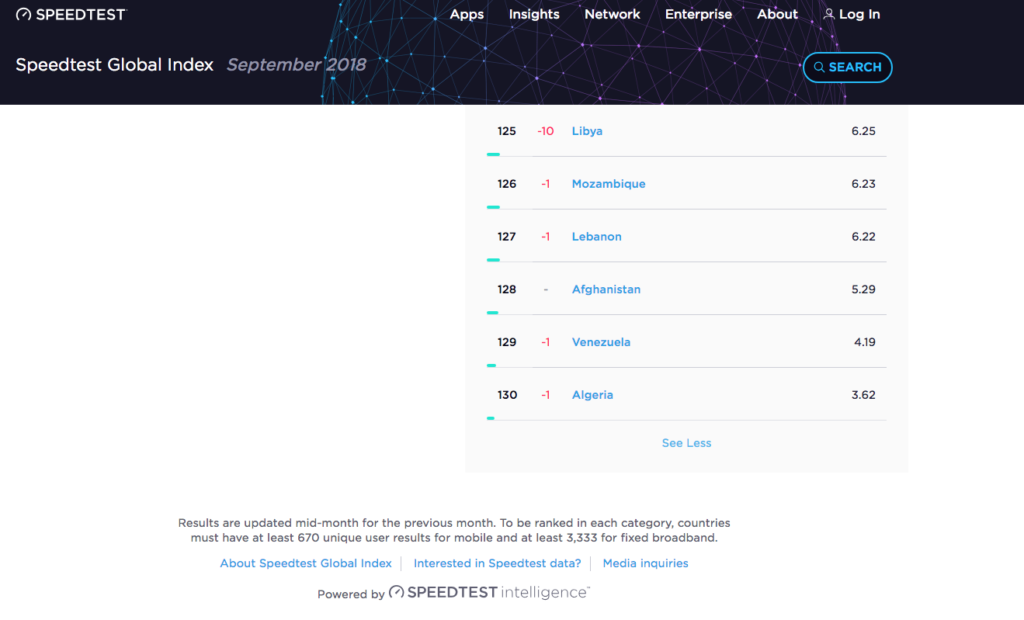
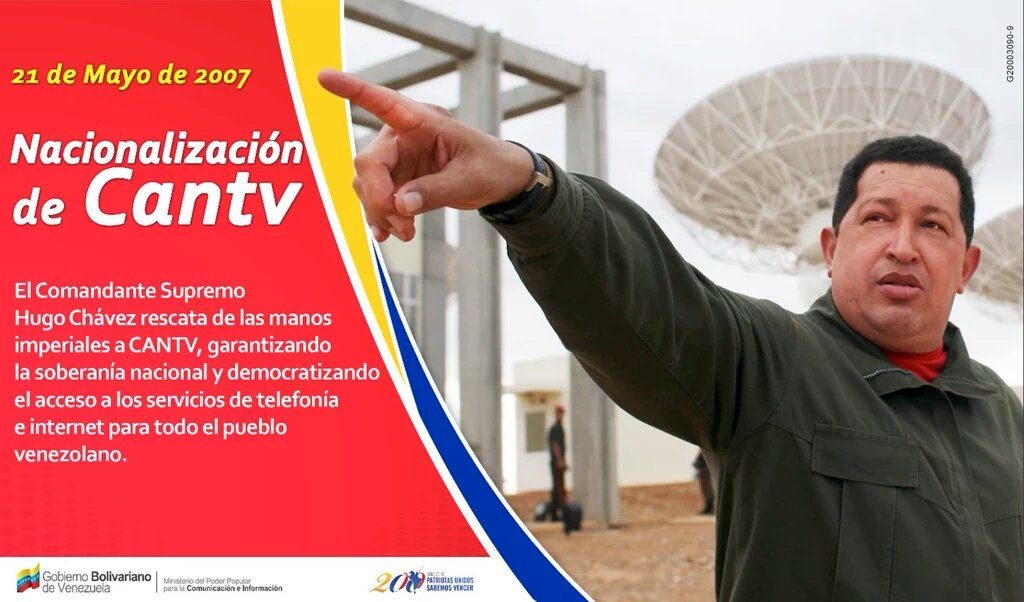
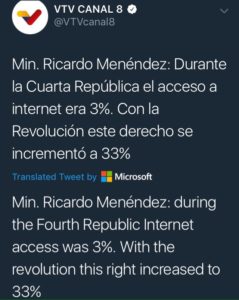
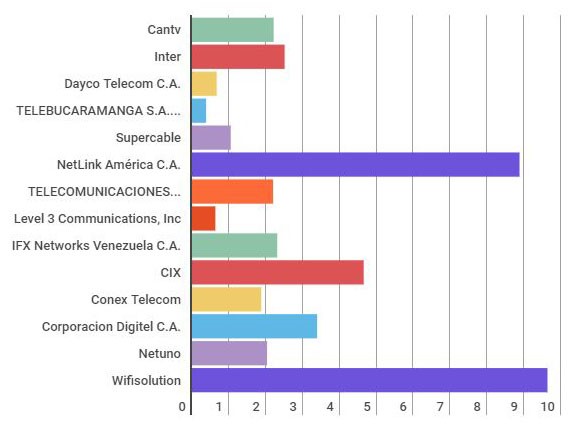
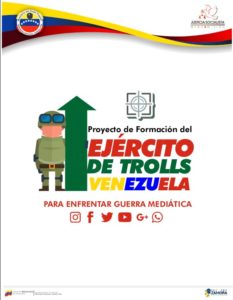
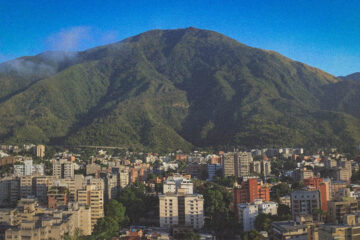


2 Comments
Lockdown | ckaleb[dot]com · June 1, 2020 at 11:57 am
[…] begins at ends at specific times like clockwork leads me to believe that it’s the same ’11-11′ traffic shaping shenanigans that they’ve been employing for years in times of […]
Venezuelan internet: beyond the collapse | ckaleb[dot]com · October 2, 2020 at 8:18 pm
[…] has been two years since I last touched the subject of the state of Venezuela’s internet, while there’s been significant changes in the […]
Comments are closed.